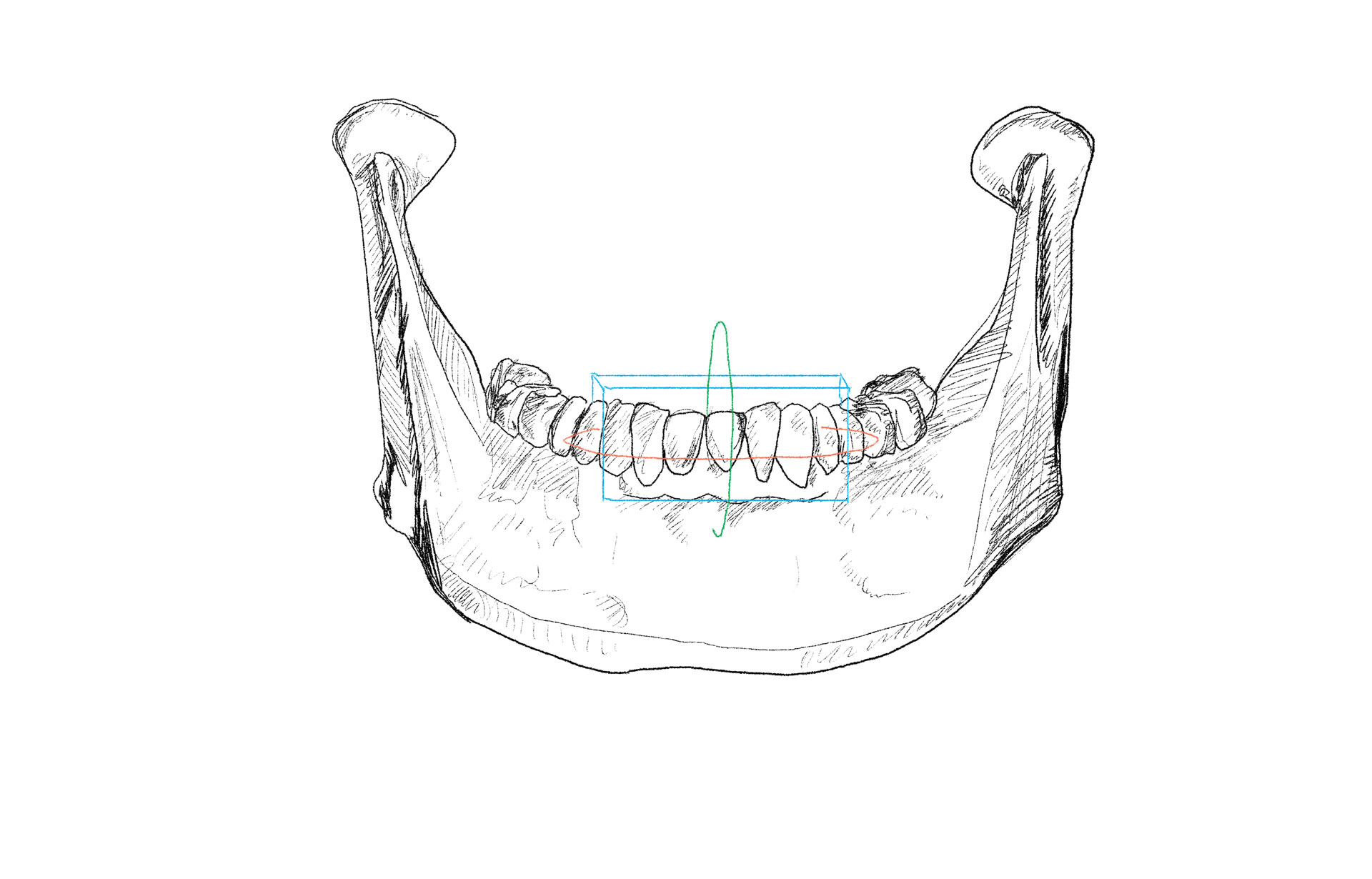The anterior orientation must function in harmony with the teeth, the pathway of the mandibular movement, and the condylar orientation. The anterior region consists of the maxillary and mandibular canines, lateral incisors, and central incisors. The orientation icon suggests that the anterior segment of the mandible will seek an adapted position within the upper anteriors in 3-D movement. (click image to enlarge)
The Anterior Orientation is the Second Determinant of Occlusion
The stomatognathic system seeks to establish equilibrium between the head, the condyle, the neck, and the occlusal posture. The anterior orientation is an excellent diagnostic component of the mandible’s preferred pathway. Force distribution patterns recorded at any age provide objective data as to when and where the anterior teeth are opposing resistance to the mandible’s preferred pathway of closure, or when and where any tooth or teeth anterior to the condyles are preventing a friction-free mandibular closure pathway.
One of the primary functions of the anterior teeth is to protect the back teeth from excursive movement occlusal surface frictional interactions. However, if the posterior teeth and the condylar orientation are not in harmony with each other, then the anterior pathway of the mandible will be altered, and the structure of the anterior teeth will change. Both the condylar guidance posteriorly, and the anterior guidance should determine the functional pathways of the mandible. The second determinant of occlusion is controlled by the teeth, where the anterior guidance determines how the front end of the mandible moves.
The Diagnostic Determinants of the Anterior Orientation Are:
- Anterior guidance – The influence of the contacting surfaces of anterior teeth on tooth-limiting mandibular movements.
- Canine guidance also named Canine-protected articulation – A form of mutually-protected articulation in which the vertical and horizontal overlaps of the canine teeth disengage the posterior teeth in mandibular excursive movements.
- Incisal guidance -The influence of the contacting surfaces of the mandibular and maxillary anterior teeth on mandibular movements.
- Occlusal plane – The average plane established by the anterior incisal edges and occlusal surfaces of the posterior teeth.
- Head, neck, and condyle orientation – The influence of posture on mandibular movements.
The anterior teeth are only one of the segments establishing the position for the anterior orientation. The myriad of systems posterior to the canines and incisors must also be in balance if the anterior orientation is to be in harmony with the stomatognathic system. In dental occlusion, guidance describes how the mandible is guided into the maxilla for both occlusal function and swallowing. The anterior teeth primarily direct the horizontal movement of the mandible in and out of intercuspation, while the posterior teeth direct the vertical movement of the condyle/disc assemblies into the glenoid fossa of the temporomandibular joints.
The presence of wear facets on the lingual and incisal surfaces of the upper anterior teeth and lower facial and incisal edges often indicate resistance to the engrained adaptive patterns of mandibular motion and to the mandible’s preferred pathway. The anterior, canine, and incisal guidance systems are all factors that influence the envelope of function and the anterior orientation of the mandible. To achieve equilibrium in the anterior segment, the orientation of the head and neck, the condyles, and the posterior dentition must also be in harmony. The two force patterns described in Figures 50 and 51 illustrate two different anterior guidance patterns; one that is a preservation state, and one that is destructive to the anterior region. These two different mandible-to-cranium pathways result in different adaptive responses of the anterior teeth, and will dissimilarly affect the longevity of the occlusion and of the system.

